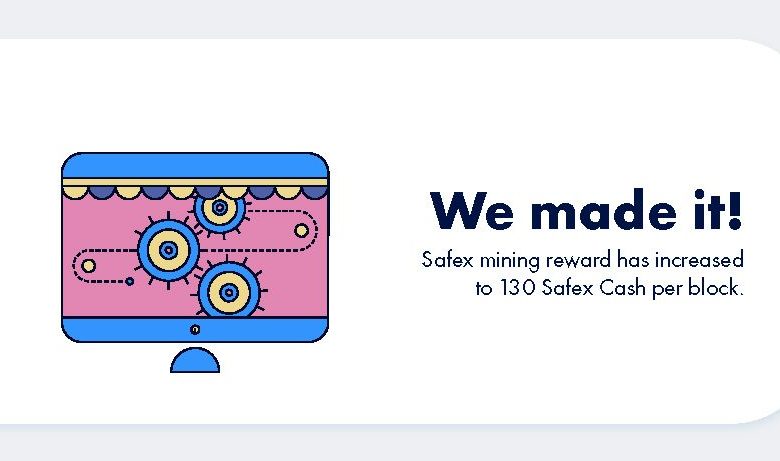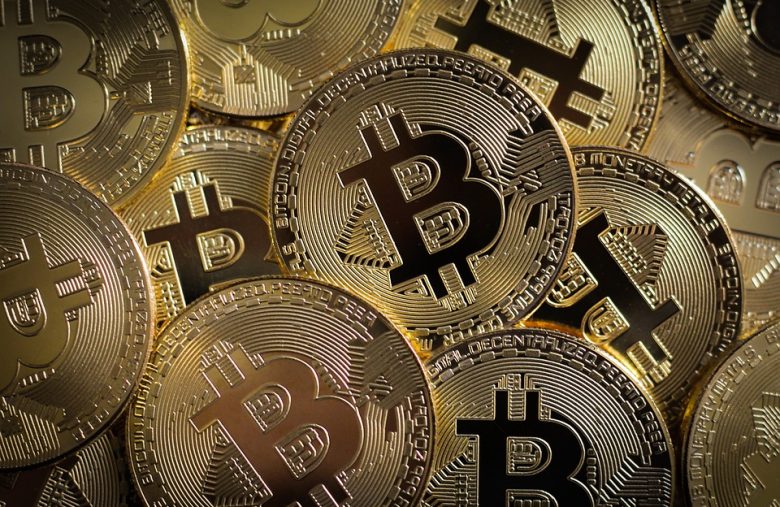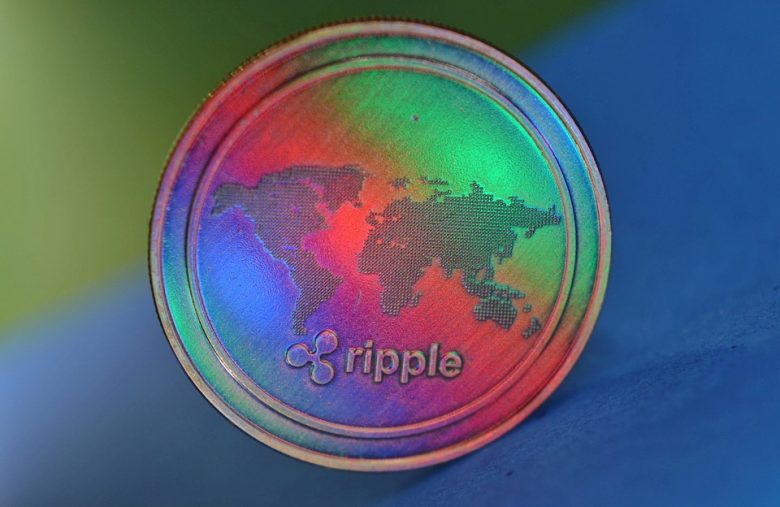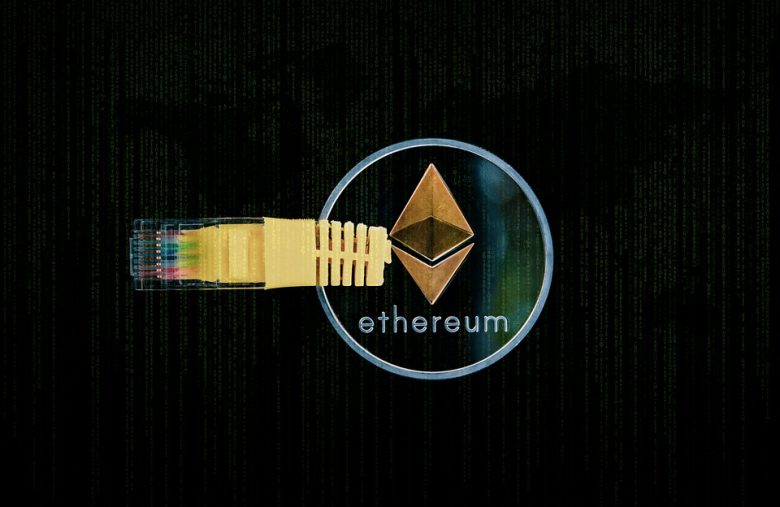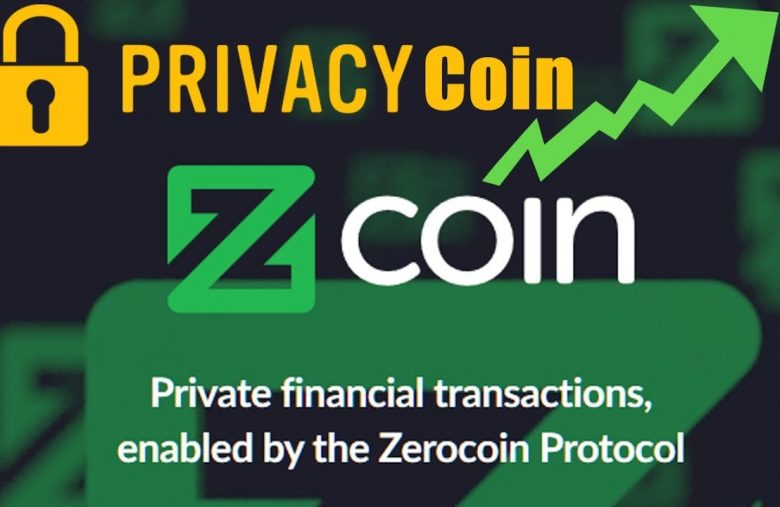CryptoCurrency Dictionary
Cryptocurrency dictionary, crypto terms and definitions.
Complete crypto dictionary and glossary to understand all the crypto words, blockchain and cryptocurrency definitions but also crypto trading terms.
51% Attack
When a person or a group of people have more than half of the computer power or mining hash rate on a network, this is a 51% attack on a blockchain.
It means that this person or entity controls the network and can negatively affect a cryptocurrency by taking over mining operations, stopping or changing transactions, and double-spending (reusing) coins.
Address
Where cryptocurrency can be stored, sent to and from, in the form of a string of letters and numbers. A cryptocurrency address can be shared publicly in the form of text or QR code to those who want to send you cryptocurrency. Kind of like with email adressess in a way.
Airdrop
A marketing campaign that distributes a specific cryptocurrency or token to an audience. It is usually initiated by the creator of a cryptocurrency in order to encourage use and build popularity of the coin or token. There are also airdrop to thank loyal crypto holders.
Altcoin
A cryptocurrency other than Bitcoin or Ethereum.
(some people argue that Ethereum is also an altcoin what we can consider but having become a major player in the creation of Altcoins precisely, Ethereum would be placed at the level of Bitcoin and could even take its place one day, the flippening).
Alt Season
What is Alt Season?
Alt Season or the season of the altcoins.
You have probably seen this term in crypto articles or on Twitter and Facebook and you wonder what that might mean.
The definition of Alt Season may be a period of time where only altcoins or other cryptocurrencies than Bitcoin are up significantly.
The phenomenon of Alt Season sees the Alt Coins like Ethereum, Litecoin, Link, EOS, XRP and other less important altcoins see significant increases in their price.
So, we are talking about an alt season as a season favorable to altcoins that are gaining importance in the crypto market with sometimes a price of Bitcoin which decreases as well as the level of its dominance on the crypto market.
AML
Anti Money Laundering, in relation to KYC procedures, Know Your Customer to identify customers.
Arbitrage
Taking advantage of the price difference that can occur between multiple exchanges. Example: the price at the instant T of bitcoin on Kraken is 2 000 Dollars, while on Coinbase it is at 1 990 Dollars. So you can buy bitcoin on Coinbase and sell it on Kraken for a profit of 10 Dollars.
ASIC
A short word for ‘Application Specific Integrated Circuit’; it is a mining equipment that is used specifically to mine a certain cryptocurrency. Often compared to GPUs, ASICs are specially created and bought for mining purposes and offer significant efficiency improvements and power savings.
ATH
All Time High. Highest price ever for a cryptocurrency, its top in a way.
ATL
All Time Low, lowest price ever for a cryptocurrency.
Atomic Swap
A solution to let people directly exchange one type of cryptocurrency for another on a different blockchain or off-chain without a centralized intermediary such as an exchange.
Bag
Relates to a stack of cryptocurrencies that someone is holding often after the price went down.
Waiting for the price to go back up, the holder holds a bag of crypto tokens that he cannot sell or for a loss.
A bag holder.
The “bag holder” can also do staking (see the definition below) and earn additional tokens that are paid to him because he holds tokens which some cryptos projects pay the holders like NEO, for example, NEO pays GAS tokens in interest each month to NEO token holders.
Bear market
Market with a downward trend (the opposite of bull market). You will also hear the term “bearish”, and by extrapolation “I’m bearish on this coin”, translating as I see this crypto going down.
Bear Trap
A technique played by a group of traders, aimed at manipulating the price of a cryptocurrency. The bear trap is set by selling a large amount of the same cryptocurrency at the same time, fooling the market into thinking there is an upcoming price decline. In response, other traders sell their assets, further driving the price down. Those who set the trap then release it, buying back their assets at a lower price. The price then rebounds, allowing them to make a profit.
Bitcoin
Bitcoin is a cryptocurrency that was invented by a person or group of people under the pseudonym Satoshi Nakamoto.
On the one hand, you have Bitcoin the coin or Token, an excerpt of code that represents the property of a digital concept – much like a virtual debt recognition.
On the other hand, you have the Bitcoin protocol, the blockchain or blockchain actually, a distributed network that keeps a log of the Bitcoin scales the token. Both are called “Bitcoin”.
The system allows payments to be sent between users without going through a central authority, such as a bank or payment gateway. It is created and stored electronically.
Bitcoins are not printed, either in dollars or euros, they are produced by computers around the world, using free software.
Bitcoin Halving
What is the definition and meaning of the term Bitcoin Halving?
Every four years or so, Bitcoin is subject to an important event called Bitcoin Halving or Halvening, which means that the rewards for the Bitcoin BTC miners are divided in half.
This happened for the first time in 2012 and again in 2016.
Likewise, this will happen again between 2020 and 2024.
The remuneration for BTC miners who mine blocks for the Bitcoin blockchain is divided by 2.
The Bitcoin Halving is originally planned by its creator, Satoshi Nakamoto and listed in Bitcoin White Paper.
Blockchain
The blockchain is an information storage and transmission technology that is transparent, secure, and operates without a central control body (ie without a trusted third party).
It is a decentralized transaction register distributed among all users, which makes it possible to secure the exchanges, which has given birth to Bitcoin which uses this technology. This decentralization challenges the role of traditional trusted third parties, particularly the intermediary platforms that today constitute the heart of the digital revolution.
We are moving from a vertical economy (top-down with centralized power) to a horizontal economy.
There is a whole new economy being built with blockchain, a new kind of internet.
We will see the new Google, Facebook from the blockchain.
Public blockchain
This is a registry (ledger) open to all.
The blockchain is characterized by its total openness: anyone can access it, without censorship, make transactions and everyone can participate in the consensus process. There is no central registry or trusted third party.
Private blockchain
The security, control and organization of decision-making powers are the responsibility of the central body (a legal person) invested with governance. The whole of this organization must be governed by statutes and internal rules of operation.
Some companies will therefore want to create their own bockchain for reasons of security or control within their business.
But also to prevent a third player from taking control of his blockchain and his hash, especially if he obtained 51% control of the blockchain in the case of a public blockchain open to all.
Block
A container or collection of transactions occurring every time period on a blockchain.
Bots
Automated Trading Robots or softwares that execute automated trading. Many exchanges have bots to keep their volume active or to do wash trading.
Bug Bounty
A campaign organized to find bugs in a code in return for rewards, usually in tokens. When a new blockchain is launched, a bug bounty is necessary to find bugs in the code, programers will join the bug bounty to be rewarded.
Bull market:
Market with uptrend (prices going up). You will also hear the term “bullish”, and the extrapolation “I’m bullish on this coin” or “this coin looks bullish”. This indicates that this crypto or token is likely to go up soon.
Bull Trap
A false market signal where the downward trend of an asset appears to be on the rise, but does not materialize, leading the bulls to lose money after buying a crypto thinking it will go up. A trap set by traders like for the Bear Trap.
It’s the same technique but it makes traders believe in an upcoming price increase.
Buy the rumor, sell the news!
When an important event or news is expected and a specific effect on the price of Bitcoin or cryptos, it is often the opposite that occurs.
So we are talking about getting ready for an event by buying a token ahead of the news and selling it before the long-awaited news happens.
The market will go in the opposite direction of what the majority is waiting for, a typical analysis of market psychology, observe what the public expects to act accordingly and make profits.
Candle
Refers to the red and green sticks that we see on the graphical charts.
As a reminder of how these candles work: each stick represents a duration (1 min, 5 min, 30 min, 1 hour, 1 day …).
A green candle indicates that between the beginning (opening price) of this duration and the end (closing price), the price has increased.
A red candle, on the other hand, indicates that the price has fallen. Example: at 16:00: the price is $200. At 16:29 the price is $190. At 16:59 the price is $210. My stick of 30 minutes between 16:00 and 16:29 will be red: the price has dropped!
The second stick of 30 minutes, between 16:30 and 16:59 will be green: the price has increased! The stick of 1h will be green, because between 16:00 and 16:59 the price has increased!
Chart
Refers to the charts and price curves of cryptocurrencies during their trading phases.
Know that cryptocurrency markets are open 24/24 worldwide and do not close like traditional stock exchanges!
Cold Wallet
A Cold Wallet, unlike a Hot Wallet, is a crypto wallet that is not connected to the internet and thus ensures optimal security for storing and securing your Bitcoins and crypto currencies!
Without an internet connection, hackers do not have remote access to your Cold Wallet and cryptocurrencies.
A cold crypto wallet or Cold Wallet like the Ledger Nano X which is certainly the best crypto wallet on the market.
Consensus
Computer consensus in distributed systems is a way for nodes (participants) to agree on the validity of a transaction and to update the general ledger with a consistent set of confirmed facts.
Correction
The sudden price change that an asset may experience as a result of a relatively long rise or fall in price. Due to psychological effects (like FOMO or FUD), a crypto will undergo a quick correction or not. This can be a readjustment after a fast rise for example.
Cryptocurrency
Peer-to-peer electronic money, based on the principles of cryptography to validate transactions and the generation of the currency itself. Bitcoin was the first cryptocurrency to be created and the most famous of these currencies.
Day Trading
A trader who makes purchases / sales every day: to oppose a long-term investor, who buys once and who keeps (hodl) his coin for a long time.
Dildo
A dildo is a long green or red bar found on a graph showing the changes in price of a cryptocurrency, in relation to the green and red candles found on price charts.
There is of course a clear allusion to a sex toy to illustrate a big movement in price.
Dip (fall)
A dip is a fall in price, a fall that can take a long time or not.
As a good trader, you will buy the dip and sell on the rise, you will often hear “Buy the dip!” precisely!
Dump
A dump is a big drop in the price of a cryptocurrency. It can happen for various reasons, negative rumors about a coin, bear market, market that collapses as a whole.
Ethereum
Decentralized platform based on a blockchain and designed so that its users can negotiate “smart contracts” on the basis of a dedicated cryptocurrency, ether. This is the main competitor of bitcoin. Ethereum (created in 2014 by Vitalik Buterin) aims to build a Web where intermediaries between customers and services no longer exist.
In the Ethereum infrastructure, the contract is not modifiable or falsifiable since its security is guaranteed by a cryptographic protocol.
Whether it’s for investing, paying for a good, etc., the Ethereum platform aims to put supplier and customer in touch without having to call on a third party.
ERC-20
These are the altcoins from the Ethereum blockchain. An ERC-20 token is therefore compatible with an Ethereum address or public key.
So to summarize, you can store an ERC-20 token on your Ethereum address.
The advantage is that you do not have to have an address or key storage for each ERC20 coin that you could have but you can send them all and store them on your Ethereum address which normally starts with 0x.
You can read our article about ERC20 Tokens: https://bitcoincryptoadvice.com/what-is-an-erc20-token
Exchange
Platform that allows trading between a multitude of cryptocurrencies (Example: Coinbase, Kraken, Binance, Bittrex, …).
It is on a crypto exchange that you will be able to buy, sell, exchange your bitcoin or your cryptocurrencies.
Do not leave your bitcoins and cryptocurrency on an exchange.
FIAT (Currency)
It is the currency issued by central banks that relies on the confidence that we have in these issuing institutions. Example: $, €, £ …
Flippening
The day Ethereum overtakes Bitcoin and takes its number one spot on the cryptocurrency market. Some predict it, its capitalization will have to exceed that of Bitcoin.
FOMO
(Fear of Missing Out). It is the fear of missing something important that causes a significant excitement pushing the person to buy a cryptocurrency.
When the price of a crypto rises quickly, the fomo appears pushing people to want to buy faster and in a hurry.
FUD
Fear, Uncertainty and Doubt. Circulating negative ideas or bad rumors about a project, in order to see the price go down. The opposite of FOMO.
Example: An important financial figure claims that Bitcoin is a scam, as JP Morgan did at one time.
The FUD will create panic and sale of cryptocurrency forsome people who will believe these rumors and will panic.
The ultimate goal is to buy them back for those who started the rumors.
FUDster
Someone who FUD. Usually, someone will FUD in order to put the price down for a coin he wants to buy at a lower price. Spreading fake rumors.
Hash
A particular function is called a hash function that calculates a fingerprint from input data to quickly identify the original data.
Hash functions are used in computing and cryptography.
Bitcoin uses the SHA-256 algorithm as a proof of work system.
In 2002, the SHA-256 function became a federal standard for information processing, producing a 256-bit hash.
The hashing is also the important element for mining cryptocurrencies, the hashing rate indicating the speed to obtain a token by mining it.
Hard Fork
A profound change in the rules governing a blockchain that can (but not necessarily) lead to a split of the currency (Example: Ethereum and Ethereum Classic) if there is no consensus between the actors.
If miners and nodes accept the new rules and updates, there is consensus otherwise there is separation into two clans causing the creation of a new cryptocurrency.
This separation occurs at a defined block.
In general, the person who owns the initial token will be awarded a token of the new created cryptocurrency.
Hodl
Comes from the word “hold”. It is the fact of investing in a cryptocurrency and not selling it for a long time (or even never).
Hot Wallet
A Hot Wallet is a crypto wallet that can be accessed via an internet connection because this crypto wallet may be installed on a mobile phone, PC or Mac, Iphone, Ipad, etc…
A Hot Wallet, unlike a Cold Wallet, is therefore more vulnerable to hacking, making your Bitcoins and cryptocurrency more easily accessible by hackers who are looking to steal your crypto currencies.
It is therefore recommended to use a Cold Wallet, which is not connected to the internet like the Ledger Nano X which is certainly the best crypto wallet on the market.
ICO – Initial Coin Offering
What means ICO?
ICO or Initial Coins Offering.
An ICO allows new companies or start-ups, whose activity is based on a blockchain, to raise public funds.
The founders issue “tokens” in an open market where they generally trade against cryptocurrencies (often Ether). Often, the created token will serve the use of the solution it will develop.
Buying coins in ICO does not make you a shareholder of the company but just the holder of the tokens issued, so this is very speculative and does not guarantee anything in the end.
Before investing in an ICO, inquire about the project of this ICO, who is the team, etc…
IEO – Initial Exchange Offering
What is an IEO?
Well, an IEO is like an ICO, the difference being that it takes place exclusively on a crypto exchange.
The crypto exchange is supposed to have selected and checked the quality of a crypto project before selling the crypto project tokens on its crypto exchange.
After the big wave of ICOs, IEOs appeared to try to revive the market and raise funds for new crypto projects and altcoins.
The fact that an IEO takes place on a crypto exchange is supposed to give more guarantees of seriousness about the projects selected by the crypto exchange.
However, as for an ICO, do your own research before investing your money in an IEO or any new crypto project that arrives on the market!
KYC
KYC means Know Your Customer. It’s a procedure to identify a customer willing to use a service or a platform like a crypto exchange for example.
By law, some companies have to do a KYC before accepting customers especially the companies dealing with money, Fiat, etc like a bank for example.
You will be asked a proof of identification and residence. It’s also necessary to perform a KYC to respect the AML laws, anti money laundering.
Limit Buy
Purchase order placed by the investor to buy cryptocurrencies at a fixed price in advance.
Limit sell
Sell order to sell cryptocurrencies at a fixed price in advance. Contrary to the limit buy!
Long position
To bet on a rising price using margin trading. That is to say, borrowing money at day T, hoping that on T + 1, the price has increased and you can sell them by selling in profit (and repaying the amounts borrowed).
This is very dangerous because the exchanges have limits to liquidate your positions and many speculators make sure to raise or lower prices in order to liquidate these positions.
Mainnet
An independent blockchain running its own network with its own technology and protocol. It is a live blockchain where its own cryptocurrencies or tokens are in use, as compared to a testnet or projects running on top of other popular networks such as Ethereum.
Some blockchain projects will want or need to be independent and will need therefore to get their own blockchain and mainnet.
Most projects starts by using Ethereum for example, some then switch to their own blockchain.
Market Buy
Buy order at the best market price at the moment of purchase.
The exchange will buy the cryptocurrencies you want at the market price in order to complete your purchase order.
Market cap
Equivalent of market capitalization: used to estimate the size of a cryptocurrency. We take the number of units in circulation of the said currency, which is multiplied by the current price of this cryptocurrency: we then obtain the market cap of this cryptocurrency.
Market sell
Order of sale at the best market price at the moment of sale. Contrary to the market buy.
Margin trading
Borrowing money to do trading. Has the effect of amplifying the gains and losses: indeed if the market plays in your favor, you earn more, but if the market does not play in your favor, you lose more (because it must repay the money borrowed…).
Masternode
A Masternode is a proprietary server, much like complete nodes, but with additional features such as transaction anonymization, transaction clearing, and participation in governance and voting.
Usually a blockchain will reward the owners of these servers for maintaining a service for the blockchain, to validate blocks for example.
To build a masternode, you will need to hold a minimum of coins that you cannot use and kept in a wallet on a server.
Dash Masternode is one of the most popular masternodes on the market and was one of the first to start masternodes. But they are very expensive nowadays but those who were able to build one when the token was still cheap are making good money now.
Dash Masternodes are computers that run a Dash wallet and make decisions, such as locking transactions with InstantSend, coordinate mixing of coins, and voting on budget funding.
A masternode can thus bring money back to the one who sets it up for the blockchain that needs it to validate its blocks in particular.
You can also get a good masternode with Zcoin or Pivx.
This website lists most of the masternodes on the market: https://masternodes.online
Miners
Miners are individuals or structures that put the power of the processor of their computers into the service of verification and validation programs.
Mining can also be done with the use of graphics cards.
Mining
It is the creation of tokens often by proof of work, proof of work to mine cryptos with graphic cards or with processors of computers.
Fiat Money
Fiat coins are the “classic” currencies used every day in the world (Euro, Dollar, Yen, …).
Moon
Moon Bitcoin, Bitcoin to the moon, Lambo. These expressions are famous in the crypto sphere.
This is a bit of an image to illustrate the price of a cryptocurrency that would rise to highs.
The moon evoking a great distance and therefore a price that would go up very high, people who hope to see their crypto rise high in price!
Nodes
(Participants). Computer connected to the network and having a program relaying the transactions.
Oracles
They intervene when it is necessary to check a condition outside the Blockchain.
Ponzi Scheme
A fraudulent investment involving the payment of so-called returns to existing investors by funds paid by new investors.
A so-called Ponzi scheme which bears the name of a famous crook, Mr. Ponzi, who gave the name to this kind of financial scam.
Private and public keys
A private key allows the user of a blockchain to initiate a transaction by signing his message.
A public key serves as an address on a blockchain.
Accessible to all, it allows a sender to address a recipient, it is a think of email addresses somehow.
This is where you store your cryptocurrency on the blockchain of your token.
Each cryptocurrency therefore has specific addresses for private and public keys.
If you send a cryptocurrency to the wrong public key address, chances are your coins will be lost forever…
If you lose your private keys, you lose access to your cryptocurrency forever, do not forget it!
Proof of Concept
It’s a demonstration of feasibility, a short or incomplete realization of a certain method or idea to demonstrate its feasibility.
Proof of Stake
What is Proof of Stake?
Proof of stake or participation.
The user must prove the possession of a certain amount of cryptocurrency to claim to be able to validate additional blocks in the blockchain and to be able to obtain free tokens allocated to the addition of these blocks.
Proof of Stake or PoS is a method used to secure a blockchain network and validate the transactions on it.
Without it the blockchain wouldn’t be able to function.
With PoSb the owner of the cryptocurrencies running on that blockchain stakes his tokens and those coins are used to validate transactions and create new blocks.
Users that stake their tokens put them into a wallet that is connected to the blockchain.
This wallet needs to be connected to the blockchain all the time but there are exceptions with cold staking now.
Proof of Work
(Proof of Work, Mining).
Users must run hash algorithms multiple times or calculate mathematical puzzles using algorithms to validate electronic transactions.
Mining or mining in proof of work can be done with computer processors or graphics cards in general.
Pump
Quickly raise the price of a cryptocurrency. A pump can therefore be caused by good news about the cryptocurrency or that the market as a whole is rising quickly.
It may also be due to a group that decides to artificially raise the price of a crytpo in order to attract new buyers and sell quickly with profit!
You must therefore pay attention to the pump that can be artificial and lead to the rapid fall in price just after buying it…
Pump & Dump
Pump & Dump (P&D) is a market manipulation, usually operated by a whale or a group of whales, which consists in artificially raising the price of a cryptocurrency in order to resell it immediately after arrival of new buyers attracted by the sudden rise in the price of the coin.
The rapid rise in the price of the token causes fomo and therefore the precipitation in buyers who run to buy the token before seeing the price drop significantly because the group of buyers will dump the coin, and sell all their coins to take their profits on the backs of the last fooled buyers.
Be careful when you see a price going up too fast, first look at why the price is going up.
ROI
Return on Investment: Calculated as realized profit – amount invested. A 100% ROI means that you doubled your starting bet.
Segwit (Segregated Witness)
Improvement of the Bitcoin protocol allowing the implementation of new improvements such as speed and transaction costs.
The segwit separates transaction signatures from the rest of the data in each block, increasing the number of transactions processed.
Segwit2x: Activation of the SegWit followed by the increase of the block size to 2MB. It is supported by the biggest mining pools.
Sell wall/buy wall
On exchanges, each actor places orders for sale and/or purchase.
When the selling price is equal to the purchase price, a trade (exchange) takes place.
All these orders go into what is known as an “order book”.
We can then look at what we have in green: purchase orders, red: sell orders.
All buy or sell orders are therefore a wall that extends according to the price placed by buyers and sellers.
A big buy wall can indicate the interest for a token and a price that could rise shortly but beware, a lot of sly traders put false buy or sell walls to make you believe a rise or a big fall will happen soon for this token.
They then remove their buy or sell wall in order to buy the token at a price which will have evolved according to the reactions of the buyers or sellers facing these false walls.
Shilling
It indicates when people talk about a cryptocurrency that they like to advertise it without always having real arguments but just because they want to promote it or to raise the price of it in order to resell it with profit.
Shitcoin
Altcoin, Coin or token that has no long term future.
Short position
Bet down using margin trading. That is to say, borrow cryptos and sell them on day T, then buy them at a lower price in T + 1 (if the price has fallen!). Once the cryptocurrency bought at a cheaper price, you repay the funds borrowed, you generate a profit equal to (differential prices) * units – (price of the loan).
Smart contract
A smart contract is a computer protocol designed to facilitate, verify or numerically apply the negotiation or execution of a contract.
Smart contracts allow transactions without third parties.
Cryptocurrencies can be implemented in smart contracts.
Smart contracts are autonomous programs to automatically executing the terms of a contract, without human intervention being necessary after their launch.
The Ethereum blockchain has become particularly popular for smart contracts.
Smart grids
Smart grids, the integration of new information and communication technologies into the networks will make them communicating and take into account the actions of the players in the electricity system, while ensuring a more efficient, economically viable and secure electricity supply.
Stable Coin
A coin that is supposed to be stable and be worth $1. Tether USDT is one of them.
But sometimes, when market move a lot, those so-called stable coins are not worth $1…
Stack
Refers to all the cryptocurrency that an investor owns.
Staking
Process that validates decisions on a blockchain by a proof of stake, we talk about stakers.
In general, you need to keep a certain number of tokens or coins in a wallet so that the blockchain uses these immobilized tokens to validate the decision and validation process on the blockchain.
Staking is a form of passive income that allows you to earn money in the form of crypto tokens that you can then sell on a crypto exchange in Euros or Dollars or against other cryptocurrencies like Bitcoin BTC for example .
NEO for example gives GAS tokens to pay NEO token holders.
Stop Buy
An order that is executed when the price exceeds a certain limit.
Stop Loss
An order that is executed when the price falls below a certain limit. This is the opposite of stop buy.
This is to avoid losses or limit them if the market falls.
TA
Technical Analysis: Refers to analysis of charts and trading curves to predict price and market developments.
Token
It is a unit of account that represents a form of asset, whose characteristics are fully programmable.
One can imagine that this represents a right to vote, or a future right to profit, or a means of payment.
The possibilities are almost infinite.
These tokens are issued by companies to finance their development by offering users to buy them to enjoy certain rights or privileges on the platform to come, an ICO.
Some tokens or coins have a real use case in the operation of the product of the company, others are useless and are a bit of a kind of shareholding of the company itself even if it’s not the case as for a real company stock.
Weak hand
A person who sells his cryptocurrency as soon as the price of a currency falls too quickly, usually under panic.
Whale
A whale is someone, a group of people or a company that holds a lot of cryptocurrency like Bitcoin, Ethereum and can therefore have a significant impact on the price of that currency by selling a lot of tokens quickly.
By selling or buying a lot of tokens at a time, the whale can raise or lower the price of a cryptocurrency quickly!
The whale can also have a lot of Dollars or Euros to buy a lot of crypto tokens at once and make the Bitcoin price go up quickly, for example.
Bitcoin and cryptocurrencies are a very speculative market with sometimes very fast price movements up or down.
Whales can play and bring down the price of a token to scare the weak hands who sell in panic, the whale then redeems the tokens much cheaper!
Or by raising the price quickly, the whale will resell its token higher.
Whash Trading
Relates to fake trading done on exchanges by Bots to keep volume alive and to especially grow their numbers pretending they have a high volume of trading.



